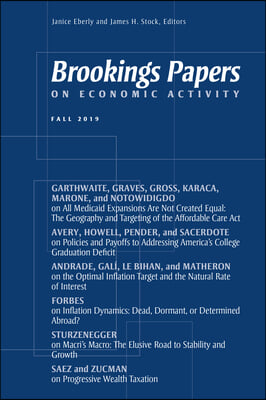The Employment Impact of a Green Fiscal Push: Evidence from the American Recovery and Reinvestment Act
IF 2.8
3区 经济学
Q1 ECONOMICS
引用次数: 5
Abstract
ABSTRACT:Investments in the green economy are used for both environmental goals and fiscal stimulus. The success of these investments depends, at least in part, on whether they create new jobs and whether such jobs are available to workers hurt by a green transition. We evaluate the employment effect of green investments from the American Recovery and Reinvestment Act (ARRA). Most job creation from green ARRA investments is permanent and emerged in the post-ARRA period, but the plausible range of estimates is extremely wide (zero to twenty-five jobs per $1 million). Such large uncertainty on aggregate effects masks substantial heterogeneity across communities. The green stimulus mostly benefited areas with a greater prevalence of preexisting green skills that created 40 percent additional jobs than average communities. New jobs are primarily manual labor and in occupations performing green tasks, especially in renewable energy. However, manual labor wages do not increase. Descriptive evidence suggests that the skill gap between green energy and fossil fuel workers is modest, but green jobs require significantly more training. Because the spatial distribution of skills and jobs matters, using green stimuli can help reshape the economy in the long run but may also exacerbate regional inequities associated with the green energy transition.绿色财政推动对就业的影响:来自美国复苏与再投资法案的证据
摘要:绿色经济投资既可用于环境目标,也可用于财政刺激。这些投资的成功与否,至少在一定程度上取决于它们能否创造新的就业机会,以及这些就业机会能否提供给在绿色转型中受到伤害的工人。我们评估了《美国复苏与再投资法案》(ARRA)中绿色投资的就业效应。绿色ARRA投资创造的大多数就业机会是永久性的,并且是在ARRA之后的时期出现的,但合理的估计范围极其广泛(每100万美元零到25个就业机会)。总体效应的如此大的不确定性掩盖了社区间的巨大异质性。绿色刺激计划主要惠及那些已有绿色技能更普遍的地区,这些地区比一般社区多创造了40%的就业机会。新的工作岗位主要是体力劳动和执行绿色任务的职业,特别是在可再生能源领域。但是,体力劳动者的工资却没有增加。描述性证据表明,绿色能源和化石燃料工人之间的技能差距不大,但绿色工作需要更多的培训。由于技能和工作的空间分布很重要,从长远来看,使用绿色刺激措施有助于重塑经济,但也可能加剧与绿色能源转型相关的区域不平等。
本文章由计算机程序翻译,如有差异,请以英文原文为准。
求助全文
约1分钟内获得全文
求助全文
来源期刊

Brookings Papers on Economic Activity
ECONOMICS-
CiteScore
10.10
自引率
0.00%
发文量
12
期刊介绍:
The Brookings Papers on Economic Activity (BPEA) is a semi-annual academic conference and journal that pairs rigorous research with real-time policy analysis to address the most urgent economic challenges of the day. Working drafts of the papers are presented and discussed at conferences typically held twice each year, and the final versions of the papers and comments along with summaries of the general discussions are published in the journal several months later. The views expressed by the authors, discussants and conference participants in BPEA are strictly those of the authors, discussants and conference participants, and not of the Brookings Institution. As an independent think tank, the Brookings Institution does not take institutional positions on any issue.
 求助内容:
求助内容: 应助结果提醒方式:
应助结果提醒方式:


